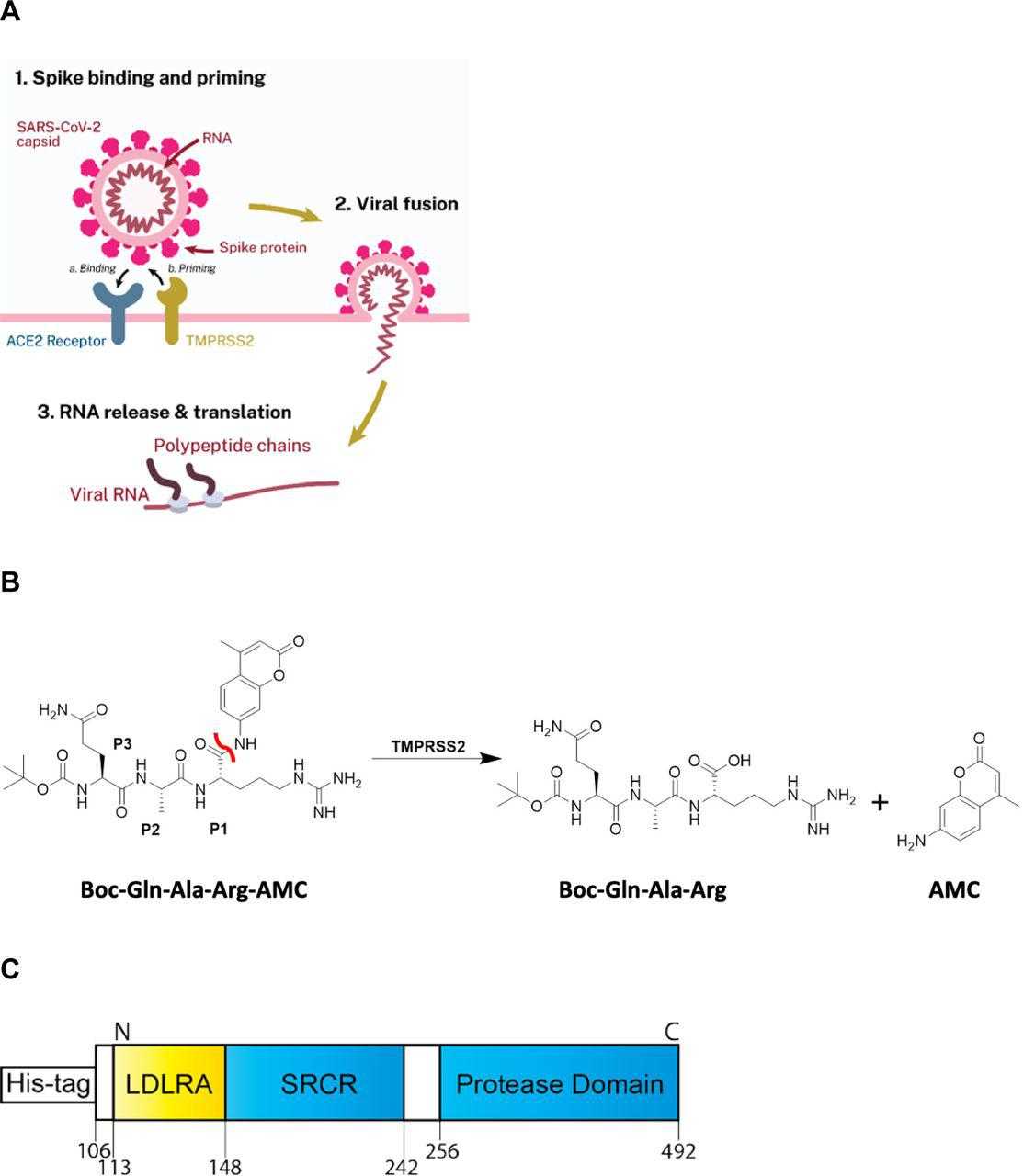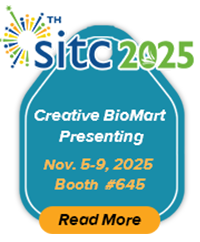Recombinant Yeast Heat Shock Protein 104
| Cat.No. : | HSP104-319Y |
| Product Overview : | RecombinantSaccharomyces cerevisiae HSP104 protein was overexpressed in E. coli and purified by conventional column chromatography techniques (908 aa, 102 kDa). |
- Specification
- Gene Information
- Related Products
- Citation
- Download
| Species : | Yeast |
| Source : | E.coli |
| Tag : | Non |
| Description : | Hsp104 is a molecular chaperone required for stress tolerance and for maintenance of [psi(+)] prions in the budding yeast Saccharomyces cerevisiae. Hsp104 can protect yeast cells against high temperature and high concentration of ethanol but mutation studies have shown this protein is not required for normal growth. Hsp104 was cloned into an E. coli expression vector and was purified to apparent homogeneity by using conventional column chromatography techniques. |
| Formulation : | Liquid. In 20 mM Tris-HCl buffer (pH 8.0) containing 100 mM NaCl, 2 mM EDTA, 5% glycerol. |
| Molecular Weight : | 102 kDa (908aa). |
| Purity : | > 90% by SDS – PAGE. |
| Concentration : | 1 mg/ml (determined by Bradford assay). |
| Sequence : | MNDQTQFTER ALTILTLAQK LASDHQHPQL QPIHILAAFI ETPEDGSVPY LQNLIEKGRY DYDLFKKVVN RNLVRIPQQQ PAPAEITPSY ALGKVLQDAA KIQKQQKDSF IAQDHILFAL FNDSSIQQIF KEAQVDIEAI KQQALELRGN TRIDSRGADT NTPLEYLSKY AIDMTEQARQ GKLDPVIGRE EEIRSTIRVL ARRIKSNPCL IGEPGIGKTA IIEGVAQRII DDDVPTILQG AKLFSLDLAA LTAGAKYKGD FEERFKGVLK EIEESKTLIV LFIDEIHMLM GNGKDDAANI LKPALSRGQL KVIGATTNNE YRSIVEKDGA FERRFQKIEV AEPSVRQTVA ILRGLQPKYE IHHGVRILDS ALVTAAQLAK RYLPYRRLPD SALDLVDISC AGVAVARDSK PEELDSKERQ LQLIQVEIKA LERDEDADST TKDRLKLARQ KEASLQEELE PLRQRYNEEK HGHEELTQAK KKLDELENKA LDAERRYDTA TAADLRYFAI PDIKKQIEKL EDQVAEEERR AGANSMIQNV VDSDTISETA ARLTGIPVKK LSESENEKLI HMERDLSSEV VGQMDAIKAV SNAVRLSRSG LANPRQPASF LFLGLSGSGK TELAKKVAGF LFNDEDMMIR VDCSELSEKY AVSKLLGTTA GYVGYDEGGF LTNQLQYKPY SVLLFDEVEK AHPDVLTVML QMLDDGRITS GQGKTIDCSN CIVIMTSNLG AEFINSQQGS KIQESTKNLV MGAVRQHFRP EFLNRISSIV IFNKLSRKAI HKIVDIRLKE IEERFEQNDK HYKLNLTQEA KDFLAKYGYS DDMGARPLNR LIQNEILNKL ALRILKNEIK DKETVNVVLK KGKSRDENVP EEAEECLEVL PNHEATIGAD TLGDDDNEDS MEIDDDLD |
| Storage : | Can be stored at +4°C short term (1-2 weeks). For long term storage, aliquot and store at -20°C or -70°C. Avoid repeated freezing and thawing cycles. |
| Gene Name | HSP104 |
| Synonyms | HSP104; Heat shock protein 104; Heat shock protein that cooperates with Ydj1p (Hsp40) and Ssa1p (Hsp70) to refold and reactivate previously denatured, aggregated proteins; responsive to stresses including: heat, ethanol, and sodium arsenite; involved in [PSI+] propagation; Hsp104p. |
| Gene ID | 850633 |
| Protein Refseq | NP_013074.1 |
| UniProt ID | P31539 |
| Chromosome Location | XII |
| Function | ADP binding; ATP binding; ATPase activity, coupled; chaperone binding; nucleoside-triphosphatase activity; nucleotide binding; unfolded protein binding. |
| ◆ Recombinant Proteins | ||
| HSP104-319Y | Recombinant Yeast Heat Shock Protein 104 | +Inquiry |
| HSP104-1258S | Recombinant Saccharomyces Cerevisiae HSP104 | +Inquiry |
An Enzymatic TMPRSS2 Assay for Assessment of Clinical Candidates and Discovery of Inhibitors as Potential Treatment of COVID-19
Journal: bioRxiv Data: 2020/8/6
Authors: Shrimp Jonathan H., Kales Stephen C., Hall Matthew D.
Article Snippet:PrePrint: Candidate substrates were tested to both confirm that the TMPRSS2 construct was biochemically active (thus far commercial protein expressed in HEK293, E . Coli and in vitro wheat germ constructs have not shown activity, data not shown), and to identify the most avid substrate, indicated by the greatest production of fluorescence from the released fluorogenic product AMC ( ).the TMPRSS2 construct was biochemically active (thus far commercial protein expressed in HEK293, E . Coli and in vitro wheat germ constructs have not shown activity, data not shown), and to identify the most avid substrate, indicated by the greatest production of fluorescence from the released fluorogenic product AMC ( ). ... The peptide Boc-Gln-Ala-Arg-AMC had 27% released AMC at 60 min, which was the highest observed, and was used for further assay optimization and inhibitor screening with Yeast expressed recombinant TMPRSS2 from Creative BioMart ( ).. Next, a TMPRSS2 titration was performed at constant substrate concentration (25 μM) to identify an appropriate enzyme concentration that achieves ~20% substrate cleavage in 60 min, and this was found to be 1 μM ( ).Next, a TMPRSS2 titration was performed at constant substrate concentration (25 μM) to identify an appropriate enzyme concentration that achieves ~20% substrate cleavage in 60 min, and this was found to be 1 μM ( ).

A) Scheme demonstrating the role
![Assessment of enzymatic activity and optimization of TMPRSS2 biochemical assay. A) Various AMC-labeled peptides. Peptide [10 μM], TMPRSS2 [1 μM] in Tris-HCl pH8. B) TMPRSS2 titration using Boc-Gln-Ala-Arg-AMC peptide [25 μM] in Tris-HCl pH8. C) Varying Tris-HCl buffer pH. TMPRSS2 [4 μM], Boc-Gln-Ala-Arg-AMC [25 μM]. D) K m of Boc-Gln-Ala-Arg-AMC while TMPRSS2 [1 μM], Tris-HCl pH8. E) 384-well plate S:B and Z’. TMPRSS2 [1 μM], Boc-Gln-Ala-Arg-AMC [10 μM], Tris-HCl pH8. F) 1536-well plate S:B and Z’. TMPRSS2 [1 μM], Boc-Gln-Ala-Arg-AMC [10 μM], Tris-HCl pH8.](productimages/extendimages/10__1101_slash_2020__06__23__167544___F2.large.jpg)
Assessment of enzymatic activity and optimization of
Not For Human Consumption!
Inquiry
- Reviews (0)
- Q&As (0)
Ask a Question for All HSP104 Products
Required fields are marked with *
My Review for All HSP104 Products
Required fields are marked with *



